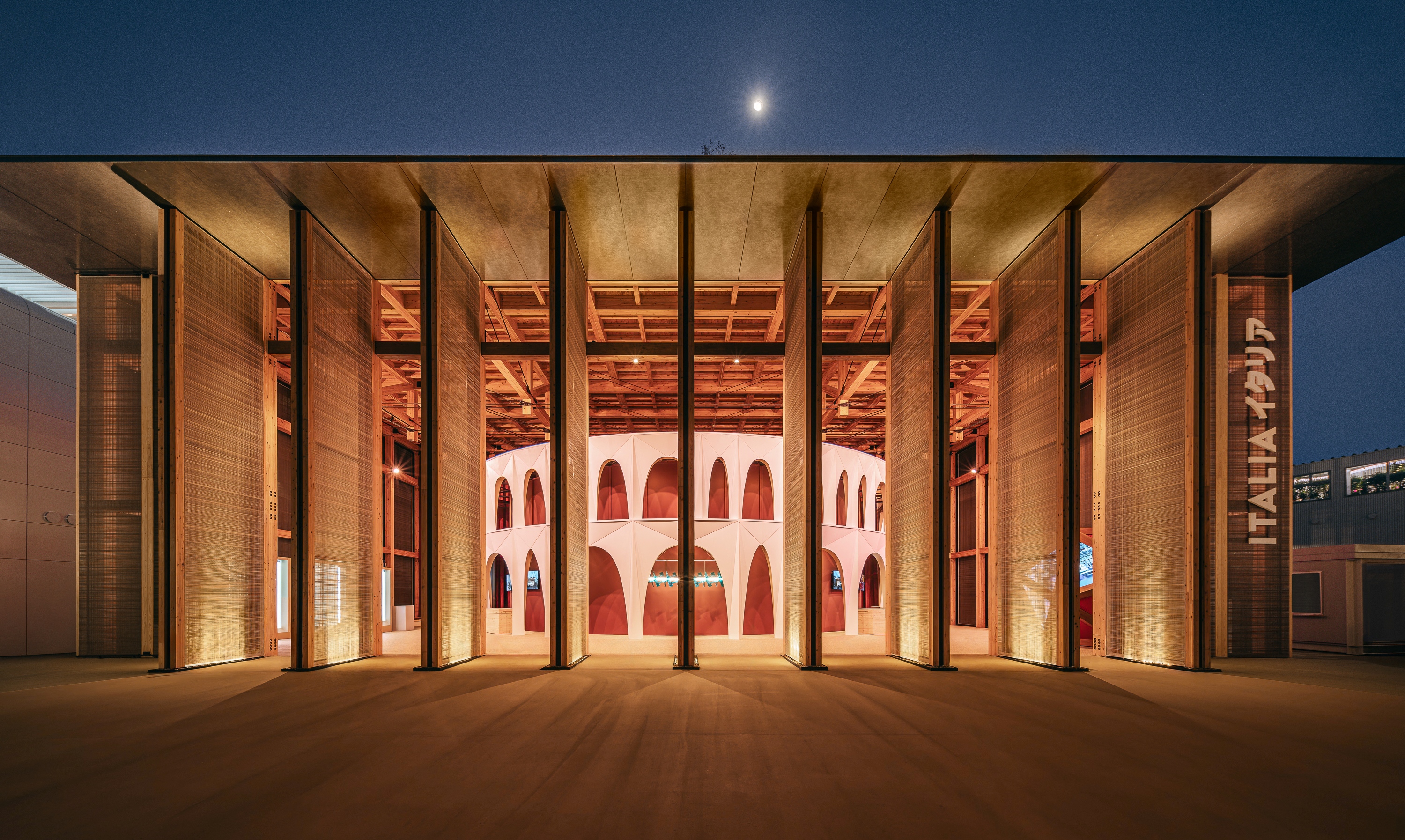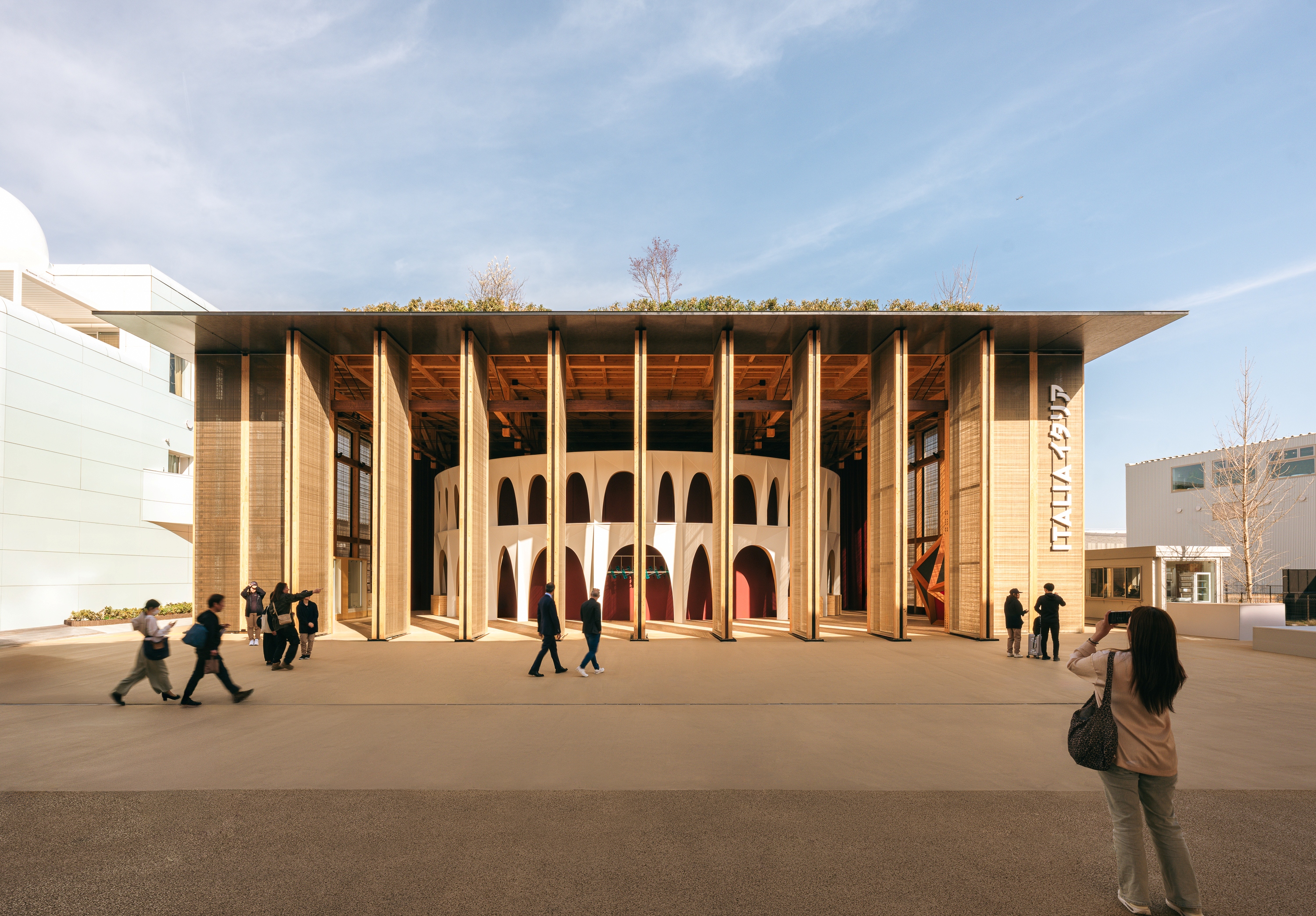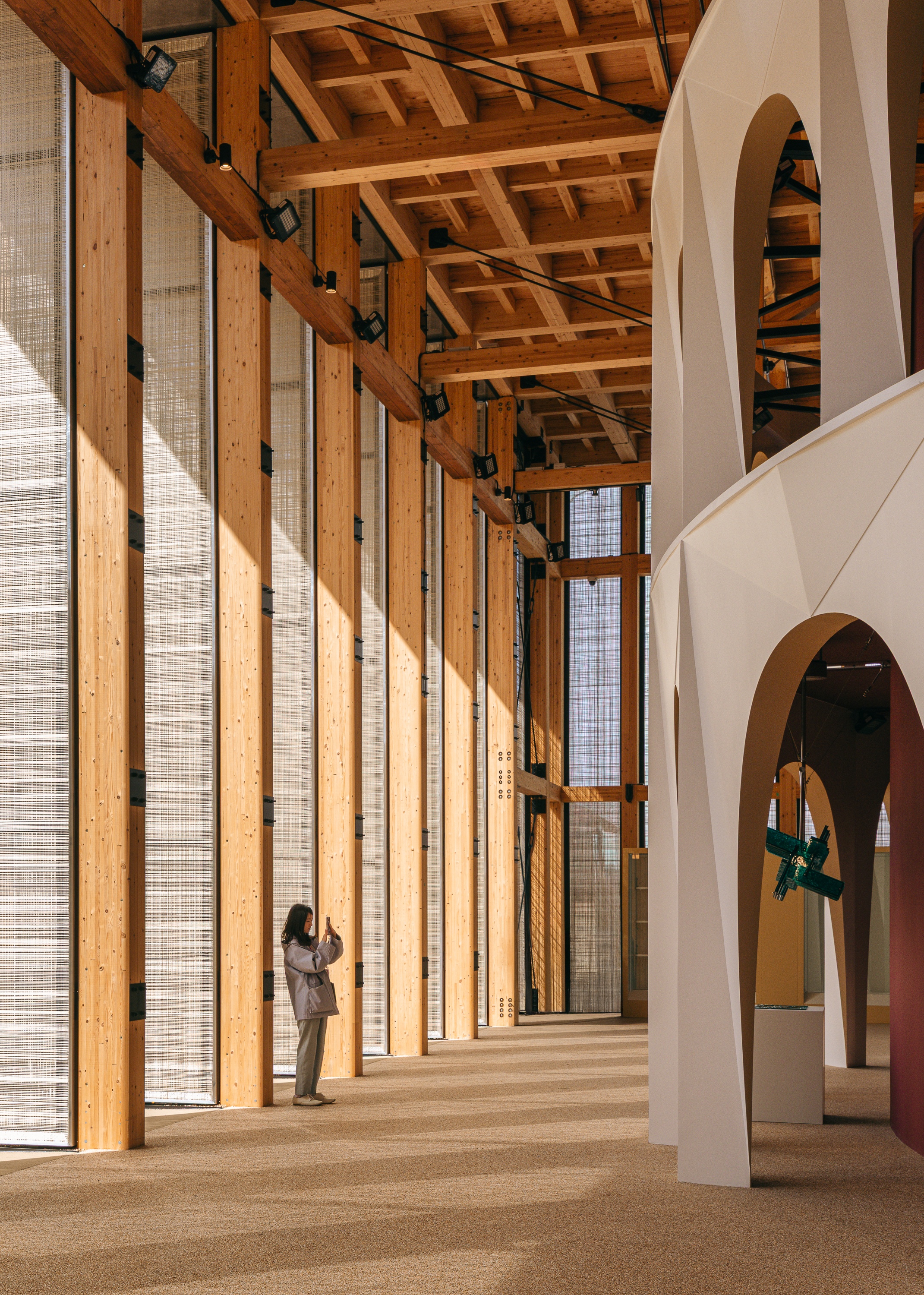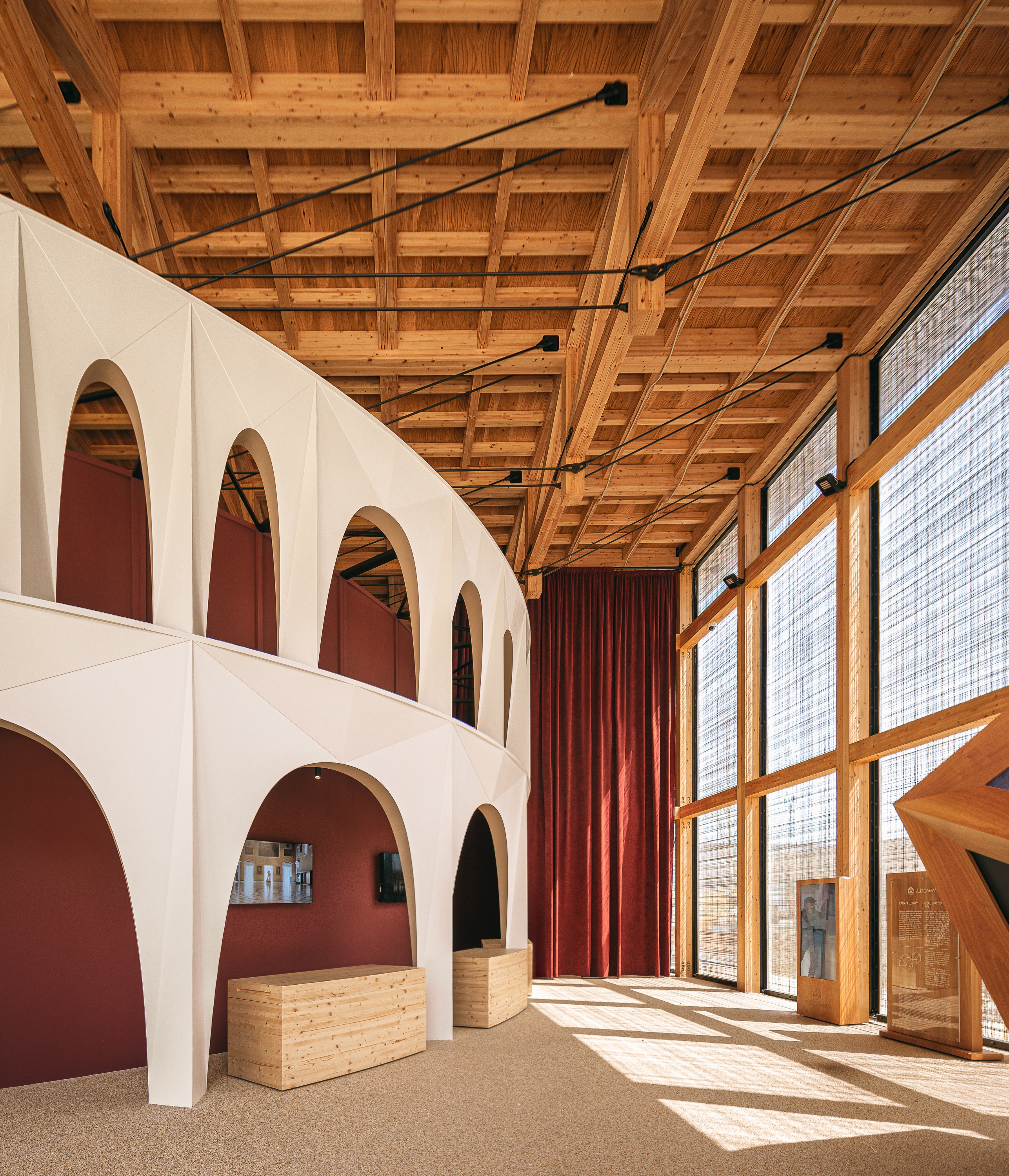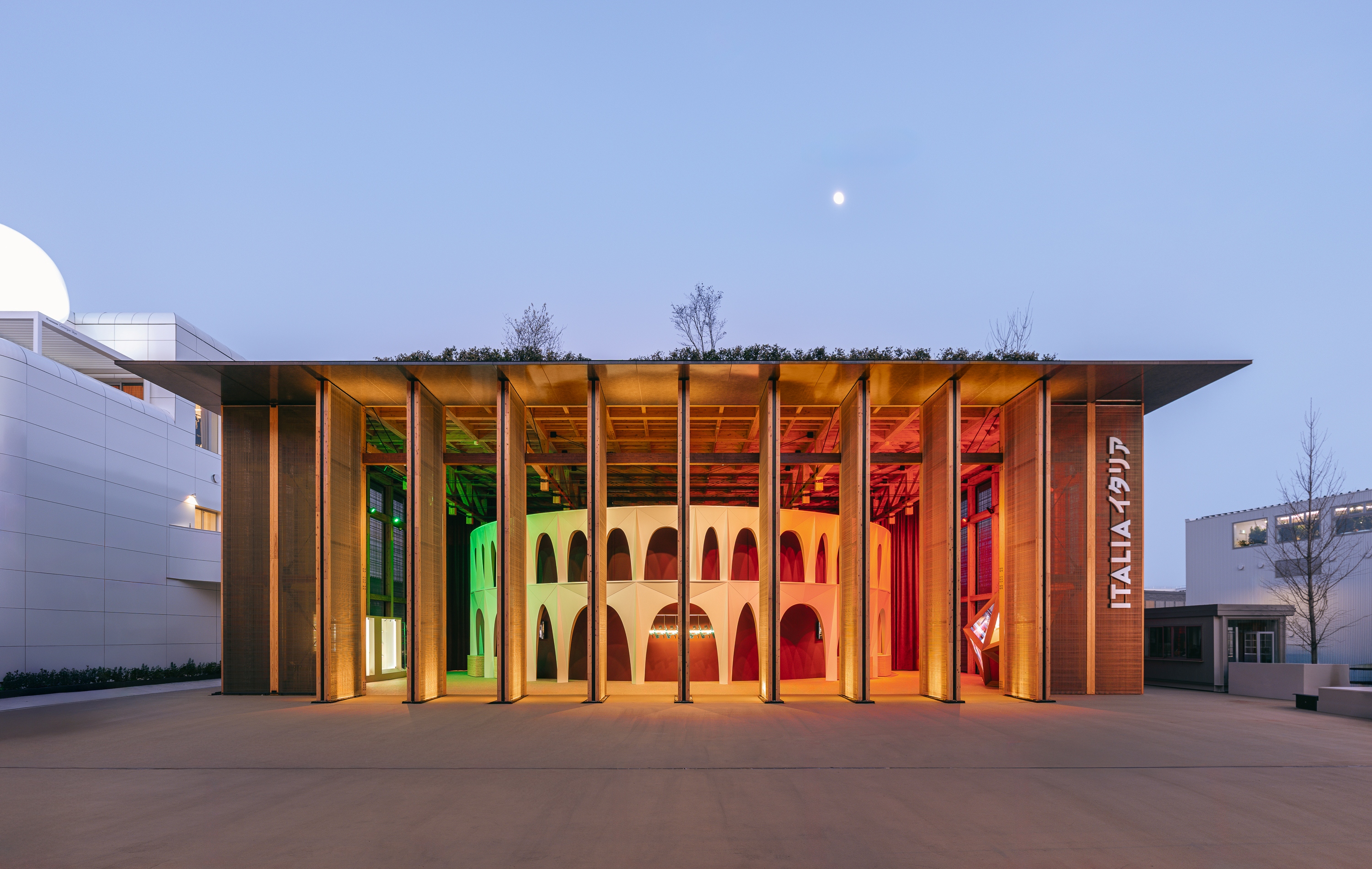
- en
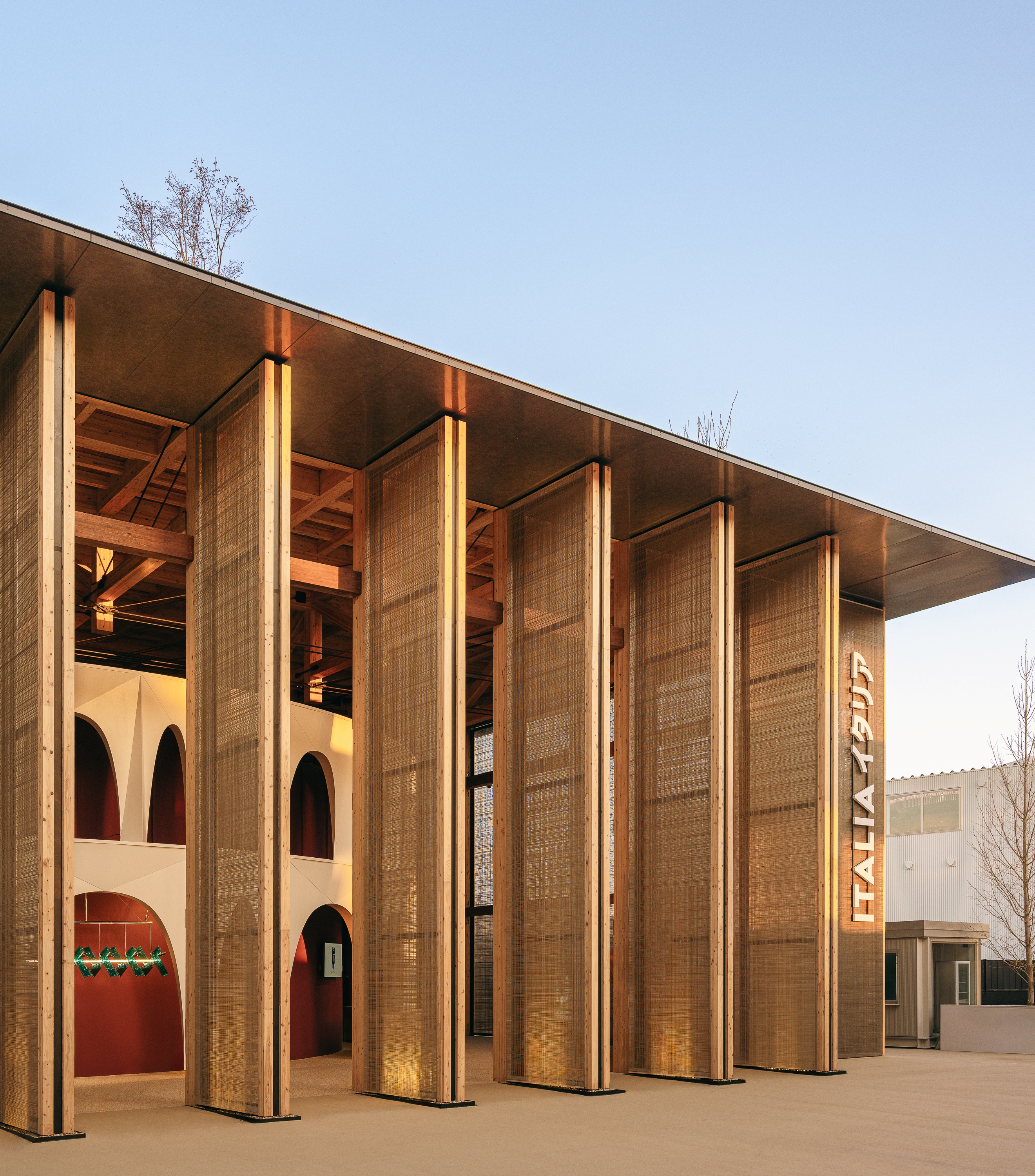
A manifesto on a sustainable, circular, and shared future. More than an exhibition building, the Italy Pavilion by Mario Cucinella Architects is an urban organism capable of generating energy, enhancing materials, restoring biodiversity, and stimulating relationships.
The modular timber structure, low-impact technologies, and design for post-Expo reuse make it a concrete example of reversible architecture that places the interaction between humans, nature, and technology at its core.
The Pavilion is an open, permeable, and welcoming architecture that reinterprets the values of Italian hospitality and landscape in a contemporary key.
The project develops a fluid and modular language, where transparency, natural light, and organic materials define the space and guide the experience.
The main body develops around the entrance foyer and is characterized by a transparent and breathable façade that filters natural light and screens the interior spaces.
The external envelope of the Italy Pavilion consists of a semi-transparent, permeable textile façade made with i-Mesh, which technically contributes to passive thermal-luminous regulation and visually accentuates the ephemeral and reversible character of the building.
The sequence of screens serves many functions. Beyond the sobriety of the decoration, created with a pattern that combines volcano and basalt fibers, coherent and compatible with the entire wooden structure, a distinctive bioclimatic function is added.
The panels have different densities based on their position, making shading more efficient according to orientation and solar radiation. The density of the weave also varies along the height of individual panels to promote the chimney effect, created by the movement between cool air entering from below and warm air exiting from above. This system of varying densities also includes screening in the central section.
The coexistence of panel orientation, different densities across the surface, and the variety of materials composing the thread has created perfect climate and light control, along with high-quality living comfort within the Pavilion.
This "skin," which contributes to solar radiation control, promotes natural ventilation and reduces energy consumption, thus playing an active role in defining the relationship between interior and exterior, light, air, and temperature, in a dynamic relationship with the surrounding environment.
Seen from above, from the promenade of the Grand Ring that surrounds the entire exhibition area, the Italy Pavilion appears as a hybrid building dominated by a reference to the Italian Garden — a place both beautiful to behold and beneficial to the ecosystem's health.
For Expo 2025 in Osaka, Italy chose a timeless symbol, an agora, a place of reflection and representation of contemporary society's great challenges, a public space with the elements that define Italy's urban and social identity — the theater, the arcades, the square, and the garden. This concept was developed from an icon, the "Ideal City" attributed to Luciano Laurana and housed in the Ducal Palace of Urbino, a work that has questioned the meaning of the ideal city since the Renaissance.
With the title "Art Regenerates Life," the Pavilion draws inspiration from environmental compatibility values that place energy management, resource control, and respect for natural resources among the core missions of the architectural and construction project.
Here, the word Art is understood in an extended and inclusive sense as "techne," synonymous with beauty, creativity, culture, and “know-how”, the characteristics that distinguish Italian identity in the world, and also as a rational, emotional, and empathetic force to unite memories of the past with expectations for the future.
For this reason, the architectural design, choice of materials and technologies, and construction process reflect the highest excellence and avant-garde of the Italian system.
The result is a recognizable and iconic place, both for the stylistic and formal signature of the project and for the program of content that characterized Italy's cultural and entertainment offering at Expo 2025 during the six months of operation.
A scenic machine prepared to host content celebrating Italian ingenuity across the most varied disciplines — from scientific research to classical and contemporary art, from design to craftsmanship to music, from performances to business stories.
A versatile and flexible "hangar of knowledge" that the eighteen Italian regions inhabited and adapted to their storytelling programs, a fertile space for international connections, an activator of networks and relationships among institutions, businesses, actors, and global communities.
Thus, twenty years after Expo 2005 Aichi, Italy presented itself to the world with a unique stage, a celebration of human talent, Italian style, and the ability to create and develop intercultural dialogues.
The load-bearing structure of the Pavilion, entirely made of laminated timber with a dry modular system, generates a dynamic spatial rhythm and reflects the principles of flexibility and reversibility, while the envelope is designed to mitigate climatic and lighting conditions in the Osaka context.
It is an architecture that is simultaneously symbolic and spectacular but also serving the activities and narratives that constitute the heritage of Italy's many cultural legacies.
Where every construction element — from materials to geometry — reduces environmental impact and promotes a sensitive connection between humans, architecture, and nature.
Energy efficiency and resource management guided the preventive climate analysis to integrate natural ventilation systems, passive cooling, and dynamic shading, minimizing overall energy requirements.
Thus, every element was designed with traceability, reversibility, and flexibility in mind to minimize waste production and maximize the long-term value of public investment
The Italy Pavilion is the result of a design that adopted a systemic approach, oriented toward regenerative sustainability throughout the building's entire life cycle.
Even at the concept stage, the temporary nature of the work was seen as an opportunity to rethink how products are built and assembled from certified supply chains.
The process was based on the principles of Design for Disassembly (DfD) and Design for Manufacturing and Assembly (DfMA), to reduce the number of components, facilitating their separation at the end of their life cycle, and maintaining their value over time.
This approach, inspired by the Life Cycle Thinking strategy, helps contain environmental impact and promotes integration among architecture, circular economy, and local production chains, without sacrificing requirements for efficiency, durability, and construction quality.
The Jury of the Bureau International des Expositions awarded First Prize to the Italy Pavilion at Expo 2025 Osaka in the 'Theme Development' category, the most prestigious recognition. Conceived and realized as a true Renaissance square, a synthesis of tradition and innovation, it created a welcoming and inclusive public space. On that stage, creativity, beauty, and opportunities for Italy’s production system came together with the virtuous supply chains of the Italian economy, its territories, and stakeholders. The award recognizes the defining traits of Italian savoir-faire and way of being, made of style, research, technical, and cultural innovation.

